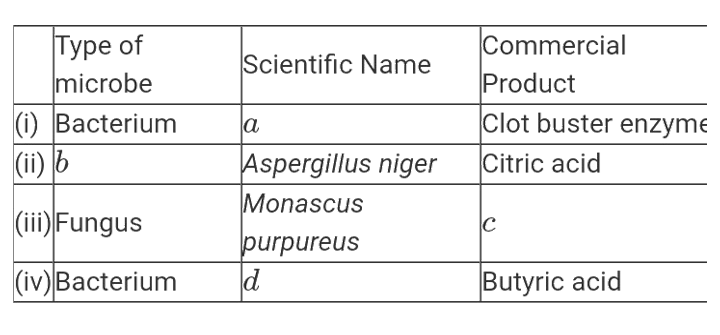Airborne bacteria and viruses form a colloidal system of __ in __. The blanks can be correctly filled by:
Solid, Gas
Gas, solid
Solid, solid
Solid, liquid
The correct Answer is:B
To solve the question "Airborne bacteria and viruses form a colloidal system of __ in __," we need to identify the correct components of the colloidal system.
1. Understanding Colloidal Systems:
- A colloidal system consists of two phases: the dispersed phase and the dispersion medium. The dispersed phase is the substance that is present in a smaller amount, while the dispersion medium is the substance that is present in a larger amount.
2. Identifying the Phases:
- In the case of airborne bacteria and viruses, these are microscopic entities that are suspended in the air. Here, the bacteria and viruses represent the dispersed phase, while the air acts as the dispersion medium.
3. Determining the Type of Colloid:
- Since bacteria and viruses are solid particles dispersed in a gaseous medium (air), this forms a specific type of colloidal system. The classification of colloids includes solid in gas, liquid in gas, gas in liquid, etc.
4. Filling in the Blanks:
- Based on the analysis, we can conclude that airborne bacteria and viruses form a colloidal system of solid (the bacteria and viruses) in gas (the air).
5. Final Answer:
- Therefore, the correct way to fill in the blanks is: "Airborne bacteria and viruses form a colloidal system of solid in gas."
- A colloidal system consists of two phases: the dispersed phase and the dispersion medium. The dispersed phase is the substance that is present in a smaller amount, while the dispersion medium is the substance that is present in a larger amount.
- In the case of airborne bacteria and viruses, these are microscopic entities that are suspended in the air. Here, the bacteria and viruses represent the dispersed phase, while the air acts as the dispersion medium.
- Since bacteria and viruses are solid particles dispersed in a gaseous medium (air), this forms a specific type of colloidal system. The classification of colloids includes solid in gas, liquid in gas, gas in liquid, etc.
- Based on the analysis, we can conclude that airborne bacteria and viruses form a colloidal system of solid (the bacteria and viruses) in gas (the air).
- Therefore, the correct way to fill in the blanks is: "Airborne bacteria and viruses form a colloidal system of solid in gas."
Similar Questions
Fill in the blanks by choosing the appropriate word/words from those given in the brackets.(dialysis, peptization , dispersed phase , dispersion medium , electrophoresis , electro-osmosis , coagulation , coagulates, emulsion , gel , gold number , Tyndall effect , protective colloids , electrodialysis)
The process of converting a suspension into a colloidal solution on the addition of an electrolyte is called.............
View SolutionA is an age related disorder characterised by decrease in bone mass and increased chances of fracture, Decreased level of B a common cause of this disease. Select the option which correctly fill the blanks A and B respectively.
View Solution
Knowledge Check
Which of the following will not form a colloidal system ?
ASolid-gasBLiquid-gasCGas-gasDGas-liquid
__________ is a thermophilic bacterium that can survive temperature upto 95◦C. Select the option which fills the blank correctly
View SolutionIVF and ET represent and respectively Select the option that fills the blanks correctly.
View SolutionWhich combination from the option fill up the blank space a, b, c and d correctly in the table below?

View SolutionDigestion of carbohydrates begins in _A_ and ends in _B_ Select the option which fill the blanks correctly
View SolutionIn each microsporangium , pollen grains formed , are released with the_____ of anther. These pollen grains of some plants, like_____ cause allergies and bronchial afflictions.
Choose the option with the pair of words which correctly fills the above blanks.
View SolutionGiven below are four statements ( A-D ) each with two blanks. Select the option which correctly fills up the blanks in two statements.
I.1100-1200
II. 1/5th
View SolutionCan a gas mixed with another gas forms a colloidal solution? Give reason for your answer.
View Solution
